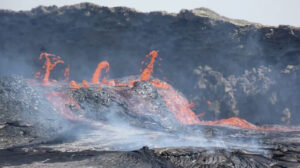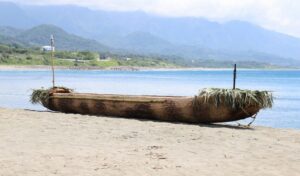The ship sits upright at around 1,600m deep. Incredibly, much of its cargo is almost perfectly intact. Energean, a London-listed energy company, stumbled across the sunken wreck during surveys of the sea floor in 2023. They contacted Israel’s Antiquities Authority about their unexpected discovery.

The ship’s control room. Photo: Energean
Their footage of the survey shows several amphorae -– double-handed jugs used to store liquids.
“It turned out to be a sensational discovery, far beyond what we could imagine,” said Karnit Bahartan of Energean.
The Israel Antiquities Authority then teamed up with the UK company to analyze the ancient ship. Over two days, a remote-operated vehicle (ROV) mapped the entire site.
Hundreds of jars
The footage shows that the ship is 12-14 meters long, its hull is buried deep within the mud, and hundreds of storage jars sit in two distinct layers.
“Commercial jars, such as those identified in the ship’s cargo, were used as receptacles suitable for…transporting cheap and large quantities of goods, and usually contained oil, wine, and other agricultural products such as fruit,” said Yaakov Sharvit of the Israel Antiquities Authority.

An ROV surveyed the wreck, almost two kilometers down. Photo: Emil Aljem Antiquities
The large number of jars hints at the size of the maritime trade at the time the boat sank. The IAA and Energean brought two of the jugs to the surface. Researchers believe they belonged to the Canaanites, a people living on the boundary of the Eastern Mediterranean. Further analysis will determine exactly what they were carrying.
There are two other known Bronze Age shipwrecks in the Mediterranean Sea. Both are smaller, slightly younger, and closer to shore than this one. Their nearness to shore always led researchers to believe that maritime trade during this period was port-to-port and that the coast was always visible from the ship.
“[But this ship] changes the understanding of how they sailed in the ancient world,” said Sharvit in a statement. “It is the first to have been discovered at so great a distance that it does not allow any eye contact with the shore.”

Canaanite jars, still in good condition more than 3,300 years later. Photo: Emil Aljem Antiquities
Skilled navigators
It demonstrates that late Bronze Age seafarers had navigational skills far beyond what we envisaged. They were crossing the Mediterranean well beyond view of the coast, likely using stars and planets to navigate.
What exactly happened to the ship is a mystery. It sank without capsizing, and most of the clay jars are intact. This leads the team to believe the sinking occurred during a crisis, perhaps a storm or a pirate attack.
Thanks to its depth, the wreck has been completely undisturbed by people, waves, or currents for thousands of years.






